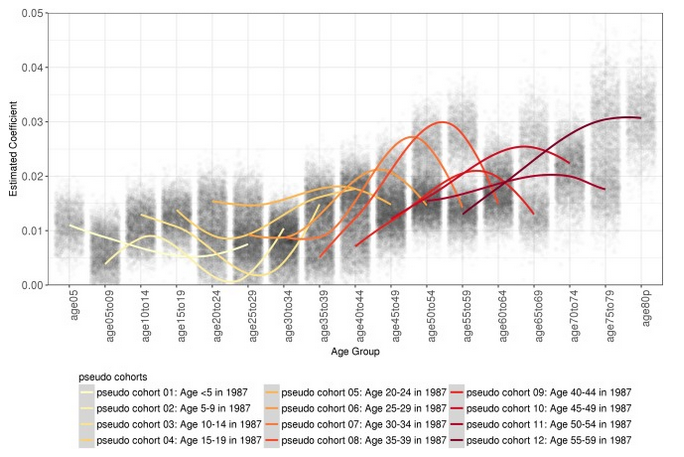Laboratory
Population Dynamics and Sustainable Well-Being
At a Glance
Projects
Publications
Team
Project
Demographic Change, Energy Demand, and Greenhouse Gas Emissions
Conducted by Emilio Zagheni; Risto Conte Keivabu; in Collaboration with Hossein Estiri (Harvard University, Cambridge, USA)
Detailed Description
Demographic change, energy demand, and greenhouse gas emissions are among the most important and interconnected drivers of ongoing climate and societal changes. Energy demand has been rising consistently despite technological advances that improve energy efficiency. Much of this increase is due to social and economic dynamics. For example, energy demand is soaring because the world population is aging, average income is rising, and because homes are getting larger. Add to this that our global climate is changing, thus creating additional burdens on energy supply and further increasing the demand for energy.
An aging and wealthier world population has been considered a potentially important driver of the increase in CO2 emissions. For instance, energy demand at the residential level is driving a large proportion of the overall CO2 emissions, and age and income are likely to stratify patterns of energy consumption due to a number of economic and housing-related factors. It is not clear, however, how these factors precisely contribute to differences in patterns of energy demand by age, income, and across cohorts. Gaining a deeper understanding of the roles that age and income play as micro drivers of energy demand would thus create opportunities to understand better the relationship between climate change, energy demand, economic growth, and population dynamics. In addition, new insights would inform the implementation of climate mitigation policies that aim to reach the targets set by the Paris Agreement.
An aim of this project is to develop statistical methods for estimating profiles of energy demand by age for individuals, using household-level survey data. We also identify the direct link between age, income, and energy demand. To this end, we account for the potential impact on energy demand of confounding variables, such as sociodemographic factors, housing characteristics, cultural determinants, local, regional, and national institutional settings, and local and regional climatic conditions. Further, the availability of projected future temperature data enables us to consider how population aging, coupled with climate change, alters energy demand. Our overarching goal is to leverage solid statistical methods and a wide range of emerging data from the climate and social spheres in order to develop a fresh perspective at the intersection of population and climate change sciences, a perspective that accounts for demographic dynamics and global warming.
Residential energy consumption by age in the US

Estimates of patterns of residential energy consumption by age for the US. The profiles for pseudo-cohorts (people born during the same period and followed over time with cross-sectional data) are constructed from fitting smoothed regression lines. © Estiri, H.; Zagheni, E.: Age matters: ageing and household energy demand in the United States Energy Research and Social Science 55, 62–70. (2019)
Demographic Change, Internal Migration, Housing, Urbanisation, Life Course, Statistics and Mathematics
Publications
Cimentada, J.; Klüsener, S.; Riffe, T.:
Demographic Research 42:6, 149–164. (2020)

Estiri, H.; Zagheni, E.:
Energy Research and Social Science 55, 62–70. (2019)
